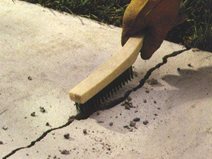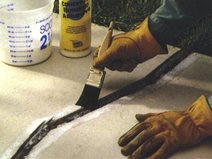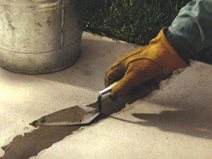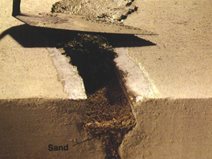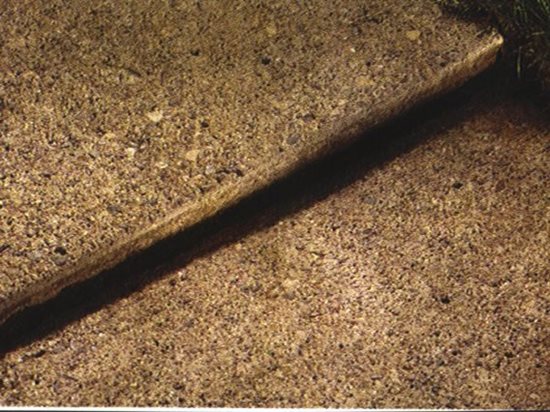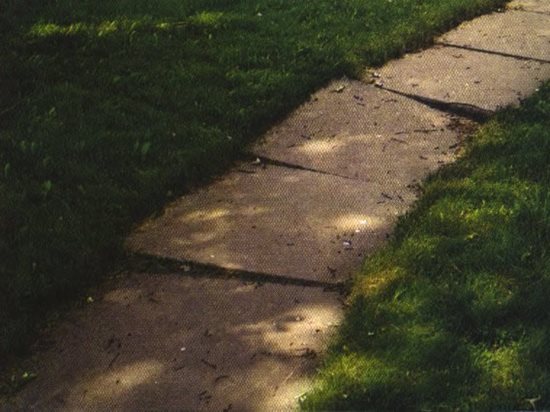- Concrete Repair Home
- Surface Repairs
- Structural Repairs
- Slab Repairs
- Concrete Crack Repair
- Common Concrete Repairs
- Stamped Concrete Repair
- Driveway Repair
- Pool Deck Repair
- Fix Spalling Concrete
- Concrete Repair Methods & Systems
- Concrete Crack Injection for Basements
- Why Concrete Cracks
- Sunken Concrete Foundations
- Repairing Bowed Basement Walls Using a Carbon-Fiber-Reinforced Grid
- Concrete Raising & Leveling Equipment
Leveling Uneven Patios, Pool decks, Walkways, Driveways & More.
Section Sponsor

Concrete Crack Repair Kits
Concrete Crack Repair for Driveways, Patios & More
Learn how to fix minor cracks in concrete with a patch and find out when replacement is necessaryIf your driveway, patio or other concrete surface has cracks, they can often be repaired. In some cases concrete crack repair can be a simple DIY project, in others it may require a professional concrete contractor to correct the damage and in the most extreme cases your concrete may need to be removed and replaced.
Find a concrete contractor near me.
Find crack repair products.
REPAIRING SMALL CRACKS
For minor cracking, here's how to fill cracks in concrete with a concrete patch or crack filler:
2. Clean loose material from the crack using a wire brush, or a portable drill with a wire wheel attachment.
3. Apply at thin layer of bonding adhesive to the entire repair area using a paint brush. The bonding adhesive helps keep the repair material from loosening or popping out of the crack.
4. Mix vinyl reinforced patching compound, and trowel it into the crack. "Feather" the repair with a trowel, so it is even with the surrounding surface.
Wide crack variation
If the width of the crack is an inch wide or larger, the process of repairing cracks is slightly different. Chisel out the crack and clean loose material as listed above. Then pour sand into the crack within the surface. Prepare sand- mix concrete, adding a concrete fortifier, then trowel the mixture into the crack. Feather until even with the surrounding surface.
Tip: If you don't like the way your repairs look, consider concrete resurfacing for a fresh, uniform surface.
 Concrete Foundation Repair Kits
Foundation Crack repair kits for any size job for Contractors, Homeowners, & D-I-Y owners
Concrete Foundation Repair Kits
Foundation Crack repair kits for any size job for Contractors, Homeowners, & D-I-Y owners
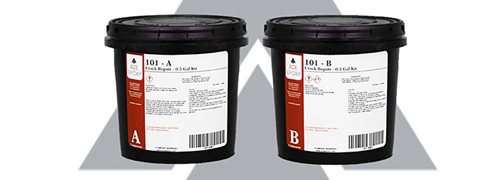 Epoxy Crack Repair
$39.86
Epoxy Crack Repair
$39.86
 Concrete Lifting
Expand your business offering
Concrete Lifting
Expand your business offering
 Concrete Slab Repair
Kits for concrete slab repair
Concrete Slab Repair
Kits for concrete slab repair
 High Performance Concrete Repair
Fast setting mix for structural repairs
High Performance Concrete Repair
Fast setting mix for structural repairs
 Divot Patch - Concrete Repair
15-minute set time
Divot Patch - Concrete Repair
15-minute set time
HOW TO TIPS FOR FIXING CRACKS
How to fix cracks in a concrete driveway
How to fix cracks in stamped concrete
IS IT WORTH FIXING, OR SHOULD IT BE REPLACED?
Concrete that is cracked only on the surface, or has hairline cracks where both sides of the crack are still level can be successfully fixed. See basics of concrete repair and troubleshooting
Cracked concrete should be replaced if due to the three conditions listed below. Any patching material used to fill these types of cracks will only be a short term fix. You definitely would not want to patch these cracks and then spend money resurfacing the concrete or doing a decorative topping.
Widespread, deep cracks, settlement has occurred
When concrete is cracked all the way through the slab it should be replaced. Sometimes this is due to the weight of large trucks, improper preparation of sub grade, erosion of sub grade, or other reasons.
- Remove the concrete
- Remove the sub grade
- Replace sub grade with compactable material (sometimes existing material is ok)
- Compact the sub grade
- Pour back concrete
Sunken concrete
Sunken concrete occurs when the sub grade was not prepared properly. Loose dirt may have been used for the sub grade. When this dirt settles-sometimes due to sprinkler or rain water going under the concrete- the concrete is unsupported and will be more susceptible to sinking.
It is possible that the sub grade was compacted and the concrete was subjected to extreme weight which caused the concrete to sink. This can often we fixed with special equipment that raises the concrete without damaging the slab (HMI Concrete Lifting & Raising Equipment).
- Remove the concrete
- Remove the sub grade
- Replace sub grade with compactable material (sometimes existing material is ok)
- Compact the sub grade
- Pour back concrete
Frost Heave
Frost heave is very common in cold climates. Moisture in the ground freezes and the concrete pushes upward.
- Remove the concrete
- Remove the sub grade
- Replace sub grade with compactable material (sometimes existing material is ok)
- Compact the sub grade
- Pour back concrete
Get the advice of a local soils engineer on sub grade preparation for your area and material needed to prepare sub grade (sometimes existing material is ok)
Whether you do the job yourself or contract it done-these are the steps to follow. See what is concrete and ordering concrete for information on ordering the right type of concrete
Other Resources:

